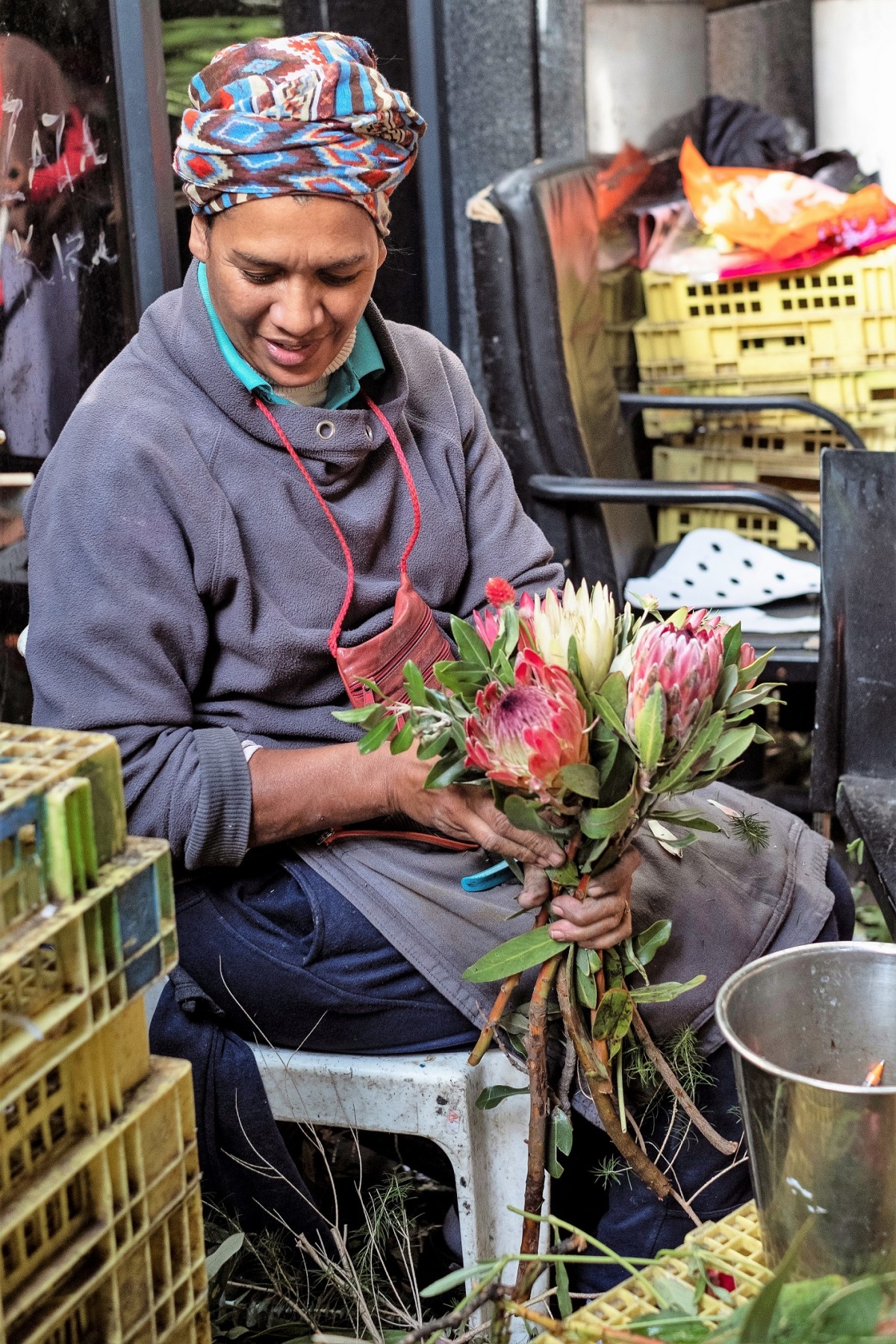
South Africa is a cornucopia of exciting plants, perfect candidates for the greenhouse or the garden in warmer parts of the U.S. Knowing and growing these rarely featured varieties opens up a whole new world of interesting designs. This month I’m talking to Sylvia Lukach, founder of Cape Lily, Floral Design and Travel.
She’s originally from South Africa, now living in New York City. Her edgy floral arrangements keep her in high demand with clients. “My designs always incorporate what’s in season and local, so they naturally have a wilder, garden-style feel to them,” Sylvia says. She also leads botanical tours to her home country.
Here are a few of her suggestions for easy-care South African plants. All will be happy grown in the greenhouse. In Zones 8-10, and even Zone 7 with protection, plant them outside in free-draining soil with plenty of sun.
Gloriosa lily (Gloriosa superba) – Sylvia notes that the flame lily is the national flower of neighboring Zimbabwe. The blooms of this trailing vine hold up well as cut flowers. Japan exports the brightly-colored blossoms to the floral trade, but Sylvia says that the tubers are easy to grow.
Lily-of-the-Nile (Agapanthus africanus) – Despite its name, agapanthus is a South African native, and one Sylvia favors. With its blue or white florets standing tall above the strappy leaves, it’s a perfect addition to the summer bouquet. Many of the more tender evergreen varieties will overwinter easily as houseplants in a sunny room. Outdoors, the dark blue flowers of deciduous ‘Storm Cloud’ is said to survive temperatures that reach zero.

Nerine bowdenii – Add an exotic touch to your autumn arrangements with these fall-blooming bulbs. ‘Blush Beauty’ and ‘Pink Triumph’ are two of many choices. They are free-flowering in the greenhouse at a time when other plants are not.
Succulents – “I love growing pretty dainty things,” Sylvia says, “like crassulas, cotyledons, and string of pearls that can be used as wearable florals, or as a unique feature in bouquets or arrangements.” While her favorites are tender, other succulents, like easy-care sempervivums and sedums, are hardy down to Zone 3.
If you’d like to see these beauties—and many others—in their place of origin, sign on to one of Sylvia’s tours for plant lovers, where you can talk with indigenous plant experts, forage for wild edibles, eat farm-to-table meals, and go on a three-day safari. For more information: www.capelilly.com/travel.


